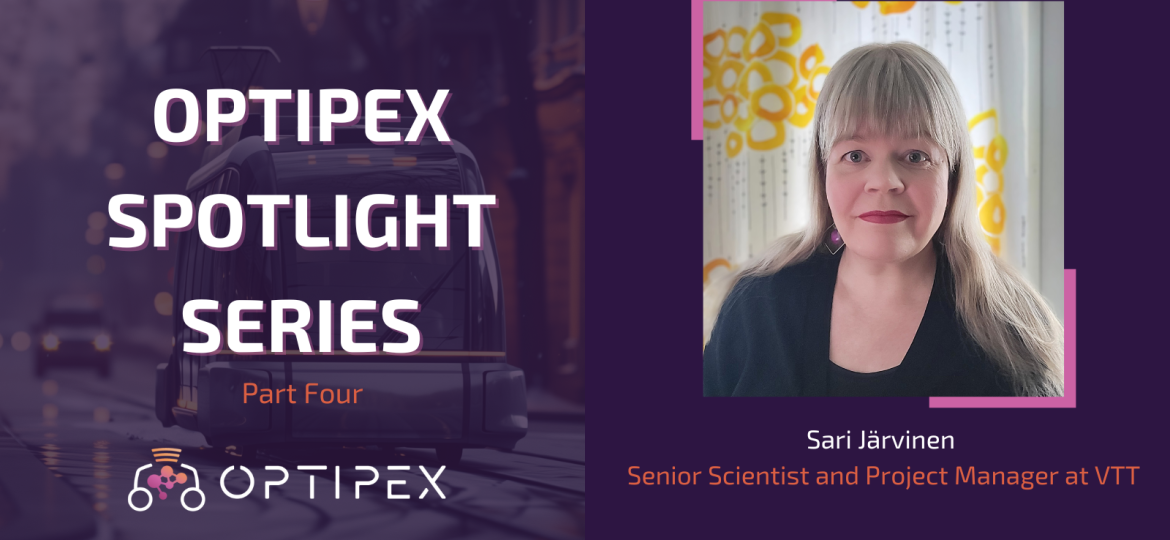
Welcome to the second edition of OptiPEx’s Spotlight Series! In this edition, we sit down with Sari Järvinen, of VTT, to explore her organization’s role in the OptiPEx project.
Thank you for speaking with us today. Could you start by introducing yourself?
My name is Sari Järvinen and I work as a Senior Scientist and Project Manager at VTT Technical Research Centre of Finland. My office is located in Oulu, Finland.
VTT is a government owned multidisciplinary research organization. I work in a team, where we develop human behaviour measurement and analytics solutions as well as adaptive services for different domains from smart manufacturing to public transportation.
Can you tell us about your general experience with public transport in your city?
The public transport services in Oulu are quite limited and Oulu is actually well-known for the biking routes, which are very well maintained all year around.
Based on this, why is a project like OptiPEx necessary?
On global scale it is absolutely necessary to enable wider adoption of public transport services instead of usage of private cars. Only this way we can lower the traffic emissions and safeguard our environment. Biking as an almost only option to private cars like in Oulu is not the most practical solution. Thus, we need more comfortable inclusive and enticing public transport services, which are in focus of OptiPEx. Also, when the public transport vehicles become autonomous passenger-aware technologies are a must also to assure the safety and comfort of passengers.
What role does your organisation play in the OptiPEx project?
In the OptiPEx project VTT has the role of the project coordinator. My colleague Johanna Kallio is coordinating the project. VTT contributes to the research work from many perspectives. We lead the co-creation work related to the Lyyli Living lab environment in Tampere, Finland. We develop passenger behaviour measurement and analytics solutions using sensors integrated on-board the vehicles. We collaborate for improvement of vehicle data infrastructures and contribute to the development of demonstrations of passenger-aware adaptive on-board services.
What will a successful contribution to the project look like for your organization?
We are aiming to demonstrate that using the novel perception and behavioural analytics solutions it is possible to improve both comfort and safety of public transport passengers. The solutions should be able to provide the insights and adapt the vehicle services in real-time without explicit interaction with passengers.
What does your organization hope to achieve between now and month 18 of the project?
We hope to have co-created a set of novel use cases/service scenarios with our focus groups. We aim to have defined behavioural indicators to support the development of analytics methods and to have implemented edge solutions to support the real-time data analytics functionalities on-board the vehicles.
Can you describe OptiPEx in three words?
Passenger-aware, next-generation